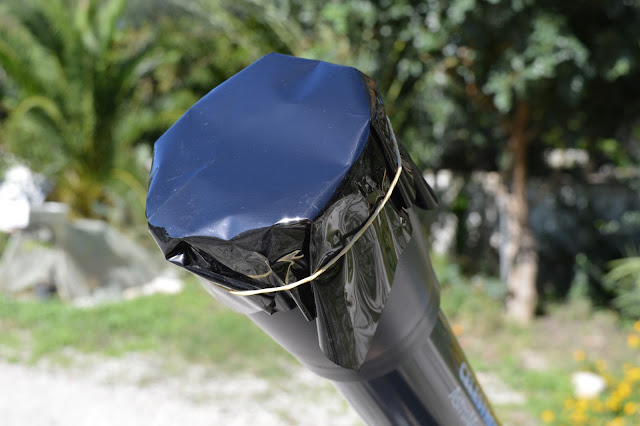Couple of months ago i got the idea of observing the sun using a solar filter. I ordered a cheap solar filter from Israel and placed it front of the telescope. Note that you have to adjust the filter in front of the the telescope not between the body and the eyepiece because high temperature can be developed inside the telescope's tube.
The next step was to point to the sun. Compared with the night sky it is really hard to target the sun, as you can't look (or you shouldn't) directly to the sun. The easiest trick is to align the body of the telescope with the sun to minimize the shadow created as shown in the next two pictures:
 |
| Aligning the telescope to the sun using its shadow. |
The final result, note the sunspot on the right. Not perfect aligned and not the best quality, but for the 20$ price tag of the sun filter is a good opportunity to explore the sunspots.
 |
| Photo of the Sun using the celestron travelscope and the sun filter. |



